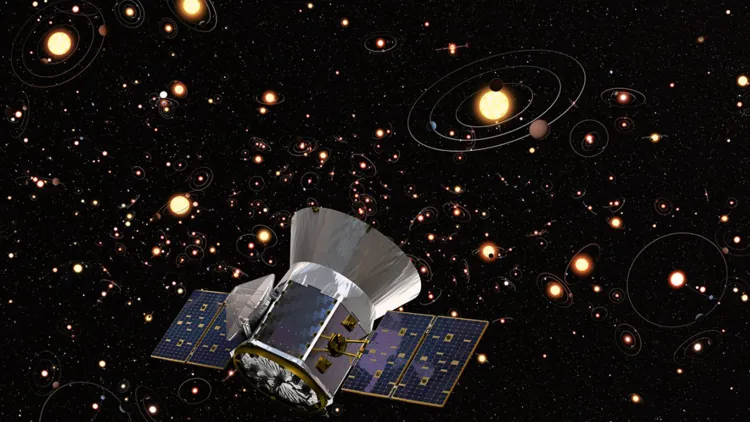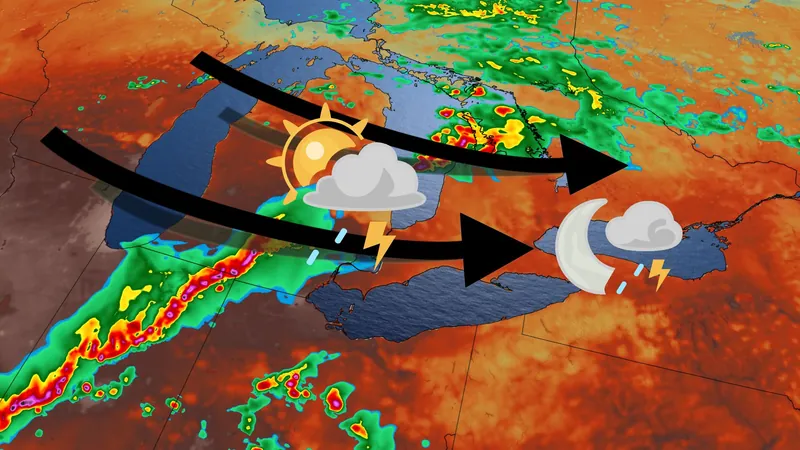
Unveiling the Truth: TESS Exoplanet Radius Biases Revealed!
2025-06-30
Author: William
Are We Underestimating Exoplanet Sizes?
A groundbreaking study recently accepted by The Astrophysical Journal raises crucial questions about the accuracy of exoplanet size measurements from NASA’s Transiting Exoplanet Survey Satellite (TESS). Could the method we’ve relied on for identifying Earth-sized exoplanets be flawed? This research dives deep into the potential underestimation of exoplanet radii by TESS, opening a new frontier in our understanding of distant worlds.
Revolutionary Discoveries Through Algorithmic Precision
To tackle these questions, a team of researchers harnessed advanced computer algorithms to reevaluate hundreds of TESS-measured exoplanet radii. Their findings? Past measurements may have underestimated these planets’ sizes by a staggering 6.1%. This underestimation skews the inferred densities by about 20%, altering our perception of whether these planets could be Earth-like.
Addressing the TESS Measurement Mystery
The researchers discovered that unresolved blending in TESS's photometric data accounts for this systematic bias across at least 228 exoplanets. They caution that this problem likely extends to a broader sample of TESS’s discoveries, emphasizing an urgent need for corrective measures. Correcting these measurements could dramatically change our understanding of the density and composition of these exoplanets, thereby affecting our search for Earth-like worlds.
The Reclassification of TESS Discoveries
Among the affected planets is a trio—TOI-1078, TOI-1235, and TOI-4524—previously considered Earth-sized. The new measurements reveal their densities indicate they’re rocky bodies with less iron than earlier assumed. This could mean that the number of Earth-like exoplanets identified by TESS may be significantly overstated!
A New Era in Exoplanet Exploration
Since its launch in April 2018, TESS has been on a mission to find exoplanets orbiting the nearest stars to Earth, boasting a record of 7,655 candidates and confirming 633 as real exoplanets by June 2025. For context, its forerunner, Kepler, confirmed 2,778 exoplanets over nine years, focusing on one constellation. TESS is redefining the search for habitable worlds!
The Fascinating TOI-700 System
One of TESS’s crown jewels is TOI-700 d, its first Earth-sized exoplanet in a star’s habitable zone, located just 100 light-years away. This intriguing system not only includes TOI-700 d but also two other worlds: an Earth-sized planet and a super-Earth, challenging scientists to explore their fascinating architecture and migrations.
Science: An Ever-Evolving Quest for Knowledge
This study highlights a fundamental truth: science is not static. It thrives on adaptation and correction, ensuring the most accurate data is obtained. While the number of Earth-like exoplanets may be lower than previously thought, this paves the way for innovative methods in exoplanet discovery and confirmation.
What Lies Ahead in Exoplanet Science?
As we await further revelations from TESS and beyond, one can only wonder what new discoveries await us in this exciting field. The journey of scientific inquiry is unending, and as we keep reaching for the stars, one thing is certain: the quest for knowledge is ever-rewarding!









 Brasil (PT)
Brasil (PT)
 Canada (EN)
Canada (EN)
 Chile (ES)
Chile (ES)
 Česko (CS)
Česko (CS)
 대한민국 (KO)
대한민국 (KO)
 España (ES)
España (ES)
 France (FR)
France (FR)
 Hong Kong (EN)
Hong Kong (EN)
 Italia (IT)
Italia (IT)
 日本 (JA)
日本 (JA)
 Magyarország (HU)
Magyarország (HU)
 Norge (NO)
Norge (NO)
 Polska (PL)
Polska (PL)
 Schweiz (DE)
Schweiz (DE)
 Singapore (EN)
Singapore (EN)
 Sverige (SV)
Sverige (SV)
 Suomi (FI)
Suomi (FI)
 Türkiye (TR)
Türkiye (TR)
 الإمارات العربية المتحدة (AR)
الإمارات العربية المتحدة (AR)